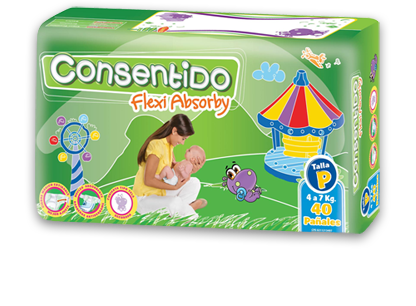Micromobility is reshaping our city streets, offering nimble solutions for short trips. These compact vehicles, from e-scooters to e-bikes, provide a convenient and eco-friendly alternative to being stuck in traffic. It’s all about smarter, more accessible transport for everyone.
The Rise of Compact Urban Transit
The rise of compact urban transit is reshaping cityscapes, offering a dynamic solution to crippling congestion and emissions. A wave of micro-mobility options, from nimble e-scooters to compact electric vehicles, is empowering commuters with unparalleled flexibility for short trips. This shift is pivotal for creating more sustainable cities, reducing reliance on private cars and reclaiming public space for people. It represents a fundamental reimagining of how we navigate our urban environments. This trend, accelerated by connectivity and a growing eco-consciousness, signals blinkee.city a vibrant, less congested future for metropolitan centers worldwide.
Defining the New Wave of Personal Vehicles
The rise of compact urban transit is reshaping cityscapes, offering a smart solution to traffic and pollution. Cities are increasingly embracing sustainable urban mobility solutions like e-scooters, micro-cars, and compact electric buses. These smaller, agile vehicles navigate dense streets with ease, providing first-and-last-mile connectivity that larger public transport systems often miss. This shift not only reduces individual car reliance but also creates more livable, less congested urban environments for everyone.
From Shared Scooters to Personal E-Bikes: A Market Overview
The hum of the city is changing. A quiet revolution is reshaping metropolitan mobility as compact urban transit solutions surge in popularity. From shared fleets of nimble electric scooters zipping through traffic to fleets of autonomous delivery bots navigating sidewalks, our streets are being reimagined. This shift towards micro-mobility is driven by a powerful convergence of environmental awareness, frustrating congestion, and smart technology. This evolution in city planning is a key component of modern sustainable urbanism, offering a practical antidote to car-centric gridlock and creating more livable, breathable urban environments for everyone.
Key Technologies Powering the Revolution
The rise of compact urban transit is reshaping cityscapes, offering a smart solution to congestion and pollution. Cities are embracing smaller, nimbler vehicles like e-scooters, micro-cars, and electric bikes that fit seamlessly into dense environments. This shift is a cornerstone of modern sustainable mobility, providing efficient first-and-last-mile connections that larger public transport can’t reach. These options empower residents with greater freedom, reduce reliance on personal cars, and create more livable, people-centric urban spaces for everyone.
Integrating Lightweight Vehicles into Cityscapes
Integrating lightweight vehicles into cityscapes is key to building smarter, more dynamic urban environments. These nimble options, from e-bikes to micro-cars, help reduce traffic density and lower our overall carbon footprint. Cities can support this shift by creating dedicated lanes and secure parking, making it safe and convenient for everyone. This move away from traditional, heavier cars is a crucial part of modern urban planning, paving the way for cleaner air and less congested streets, ultimately creating more livable cities for all.
Rethinking Infrastructure: Bike Lanes and Microhubs
Integrating lightweight vehicles into cityscapes is key to tackling urban congestion and pollution. These nimble cars, e-bikes, and scooters require less space for parking and travel, easing traffic flow. For widespread adoption, cities must adapt by creating dedicated micro-mobility lanes and updating parking regulations. This shift is a cornerstone of modern sustainable urban planning, promising cleaner, more efficient cities where smaller, smarter transport options thrive alongside traditional methods.
**Q: What are examples of lightweight vehicles?**
A: Think electric scooters, bicycles, e-bikes, and compact electric cars.
The First and Last Mile Connection to Public Transit
Integrating lightweight vehicles into cityscapes is a pivotal strategy for developing sustainable urban mobility. These compact, often electric, modes of transport—from e-bikes and scooters to micro-cars—reduce traffic congestion and lower emissions. Their success, however, hinges on thoughtful infrastructure adaptation. This includes creating dedicated lanes, secure parking hubs, and clear regulatory frameworks to ensure safe coexistence with pedestrians and larger vehicles.
This shift is fundamental for creating multi-modal transit networks that reduce reliance on private cars.
The widespread adoption of these vehicles is a key component of modern traffic management solutions, paving the way for cleaner, more efficient cities.
Parking and Geofencing Solutions for Clutter-Free Streets
Integrating lightweight vehicles into cityscapes is revolutionizing urban mobility by reducing congestion and lowering emissions. From nimble electric scooters to compact micro-cars, these agile solutions seamlessly weave through traffic, offering a dynamic alternative to traditional transport. This shift demands innovative urban planning strategies, including dedicated lanes and smart parking, to ensure safety and harmony. Embracing these sustainable transportation options is key to creating cleaner, more efficient, and less crowded cities for the future.
Environmental and Economic Impacts
The environmental and economic spheres are deeply intertwined, creating a powerful feedback loop. Practices like deforestation and unchecked industrial pollution inflict severe damage on ecosystems, which in turn triggers massive economic consequences. These include staggering cleanup costs, a decline in fisheries and agriculture, and rising healthcare expenses. Conversely, sustainable management and green technology present immense opportunities. Sustainable development is not merely an ecological ideal but a profound economic strategy.
A thriving, healthy natural world is the ultimate foundation for long-term, resilient economic prosperity.
Investing in renewable energy and circular economies fosters innovation, creates new jobs, and builds a more stable financial future, proving that protecting our planet is the most sound economic decision we can make.
Reducing Carbon Emissions and Traffic Congestion
The delicate balance between our economy and environment is a story of cause and effect. A factory’s prosperity can be shadowed by its smokestack’s plume, a classic example of industrial pollution affecting air quality. This pursuit of growth often extracts a hidden tax on our natural world, depleting resources and disrupting ecosystems. The narrative, however, is shifting towards a more sustainable plot, where long-term economic stability is intrinsically linked to environmental stewardship and responsible resource management.
Cost Analysis: Ownership vs. Shared Subscription Models
The relentless churn of industrial progress casts a long shadow, intertwining environmental degradation with economic instability. A clear-cut forest represents not just a loss of biodiversity but also the erosion of natural capital, undermining the very resources that fuel local economies. This creates a vicious cycle where short-term economic gains lead to costly long-term consequences, from climate adaptation to public health crises. Sustainable development goals are essential to break this cycle, proving that a healthy planet is the bedrock of a resilient economy.
Boosting Local Commerce and Urban Accessibility
The environmental and economic impacts of our actions are deeply intertwined. Neglecting our ecosystems creates a massive financial burden, from healthcare costs due to polluted air to rebuilding after climate-fueled disasters. This cycle of damage and repair is unsustainable. A powerful shift is happening, however, as businesses and governments realize that protecting our planet is also a powerful economic strategy. Sustainable development goals are key to this, fostering innovation in green technology and creating new, resilient jobs. As one expert noted,
The economy is a wholly-owned subsidiary of the environment, not the other way around.
This mindset is crucial for building a future that is both prosperous and healthy.
Navigating Safety and Regulatory Challenges
Navigating safety and regulatory challenges is a constant balancing act for modern businesses. It’s not just about avoiding fines; it’s about building genuine consumer trust and ensuring products are safe and reliable. Companies must stay agile, constantly monitoring for new compliance requirements and adapting their processes. It’s a complex puzzle, but getting it right is absolutely crucial. Successfully managing this landscape is a major competitive advantage, protecting your brand and fostering long-term customer loyalty in a world that increasingly values transparency.
Helmet Laws, Speed Limits, and Rider Education
Navigating safety and regulatory challenges requires a proactive and integrated approach to compliance management. Companies must move beyond reactive measures, embedding regulatory intelligence directly into product development cycles and supply chain operations. This strategy mitigates significant financial and reputational risks while building market trust. A robust regulatory compliance framework is essential for sustainable growth. Key steps include conducting thorough risk assessments, maintaining meticulous documentation, and engaging with regulators early. Ultimately, viewing compliance not as a hurdle but as a core component of quality and safety is what separates industry leaders.
Vehicle Standards and Data-Sharing with Municipalities
Navigating safety and regulatory challenges requires a proactive, integrated strategy rather than a reactive posture. Businesses must establish a robust compliance framework that continuously monitors evolving legislation and industry standards. This involves conducting thorough risk assessments and implementing agile safety protocols. A key component is fostering a culture of compliance where every employee understands their role in upholding these standards. This diligent approach to regulatory compliance management not only mitigates legal and financial risks but also builds invaluable trust with consumers and stakeholders, securing a competitive advantage.
Insurance and Liability in a Shared Economy
Navigating safety and regulatory challenges is a critical imperative for modern enterprises, demanding a proactive and integrated strategy. Companies must move beyond mere compliance to embed robust risk management frameworks directly into their operational DNA. This involves continuous monitoring of evolving legislation, rigorous employee training, and the strategic deployment of compliance technologies. Successfully overcoming these hurdles is fundamental to building enterprise resilience, protecting brand reputation, and securing a sustainable competitive advantage in a complex global marketplace. Ultimately, a forward-thinking approach to regulation transforms potential obstacles into opportunities for market leadership and trusted stakeholder relationships.
The Future of Personal Urban Mobility
The future of personal urban mobility is zipping towards a world far beyond simple car ownership. We’re entering an era of integrated, multi-modal transport where your phone seamlessly blends an e-scooter ride, a shared autonomous vehicle, and a subway trip into one smooth, on-demand journey. Our city streets will transform, prioritizing people and micromobility over parking lots, leading to cleaner air and less congestion. This shift to mobility-as-a-service promises ultimate convenience, freeing us from the hassles of gas, insurance, and parking, while making our cities more livable for everyone.
Emerging Trends: E-Cargo Bikes and Light Electric Vehicles
The morning commute is transforming from a traffic-jammed ordeal into a personalized journey. The future of personal urban mobility is a seamless ecosystem where electric, autonomous vehicles are summoned on-demand, gliding silently through smart-city corridors. Our streets will breathe again, repurposed for green spaces as micro-mobility options like e-scooters handle the final mile. This isn’t just about new technology; it’s a fundamental shift towards sustainable urban living, prioritizing people over parking and reclaiming the city for community. The era of the privately-owned, fossil-fueled car is gently rolling into the sunset.
The Role of AI and IoT in Fleet Management
The future of personal urban mobility is shifting from ownership to integrated, on-demand services. We will transition towards **sustainable transportation ecosystems** characterized by electric and autonomous vehicles. These will be accessed through Mobility-as-a-Service (MaaS) platforms, which combine public transit, ride-sharing, e-scooters, and more into a single, seamless user experience.
This evolution promises to reduce congestion, lower emissions, and reclaim urban space currently dedicated to parking.
The key will be a connected network where multiple transport options complement each other, making city travel more efficient and environmentally responsible.
Policy Shifts and Long-Term Urban Planning Strategies
The future of personal urban mobility is shifting towards integrated, multi-modal ecosystems. While electric and autonomous vehicles will play a role, the focus is on seamless connectivity. Residents will use a single platform to plan and pay for journeys combining micro-mobility options, on-demand shuttles, and public transit. This approach prioritizes efficiency and sustainability over single-car ownership, reducing congestion and emissions. The evolution of smart city infrastructure is crucial for managing this dynamic flow of people and data, creating cleaner, more livable urban environments.


